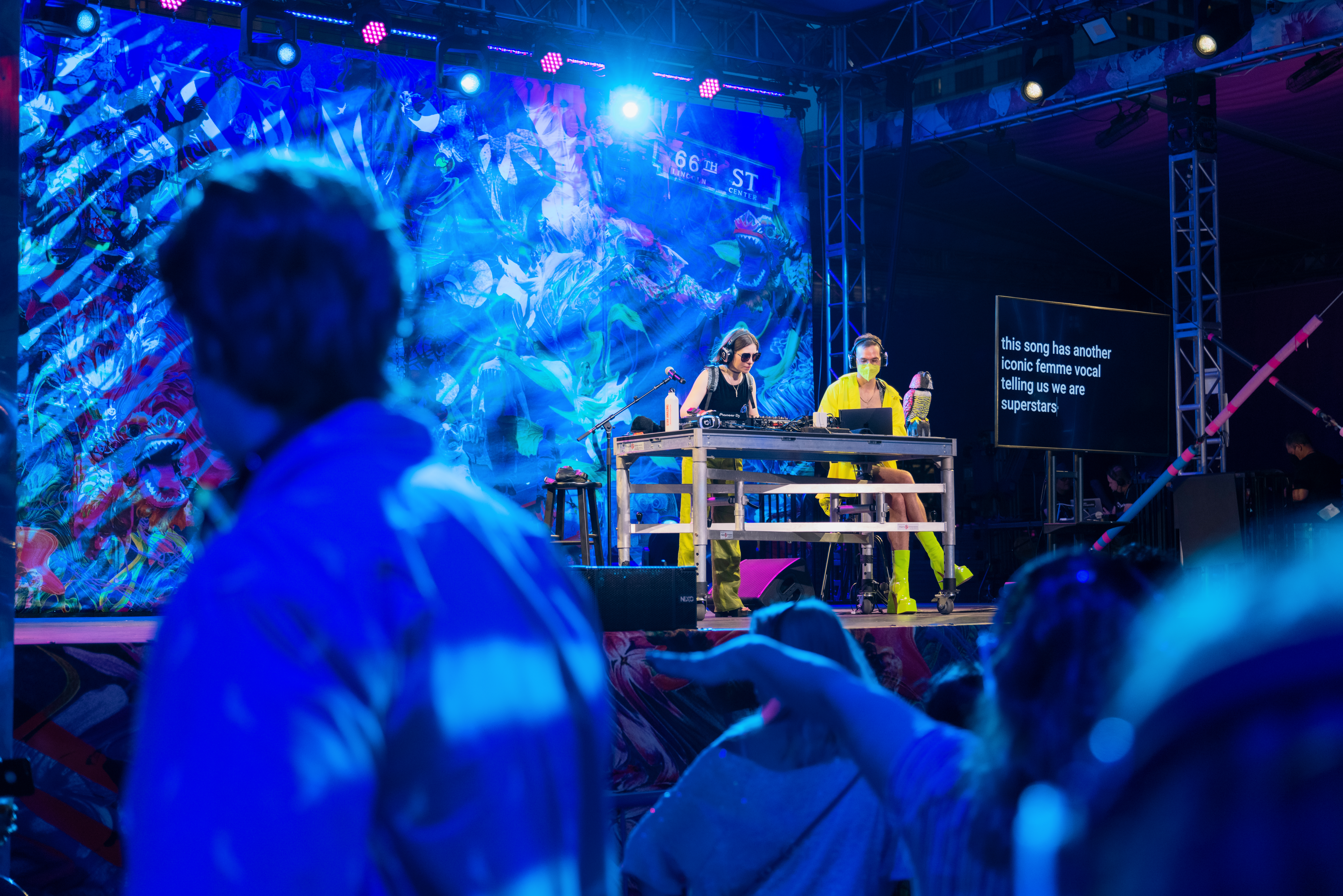Supporting New York’s Deaf and Disabled Artists

Since Artist-Organizer Kevin Gotkin joined CRNY in 2022, they have been working on a range of projects that help us understand and support the lives and livelihoods of Deaf and disabled artists. Kevin’s background in research and cultural organizing helped them identify initiatives that match what artists and organizations need in our rapidly evolving contexts. The projects span CRNY’s program areas to offer data, programming, and documentation to advance the vibrant fields of Deaf and disability artistry.
Artist employment and guaranteed income, two ways CRNY reached individual artists across the State, hold tremendous potential to transform artists’ lives. But a persistent lack of access and difficulties with public benefit programs can leave some artists with more trepidation and fewer resources unless programs use Deaf- and disability-centric strategies.
The projects below offer new insights, tools, and techniques for how funders, advocates, artists, and organizations can move toward care that all artists need.
For more on CRNY’s evaluation work, see the “Research” section of this site.
Research: Deaf and Disabled Artist Employment

Design by Yo-Yo Lin
How does employment support the lives and careers of Deaf and disabled artists in New York State?
This document offers context, data, and analysis about artists’ lives and careers in the CRNY Artist Employment Program (2022 – 2024).
This report seeks to:
- Identify and reflect on the contexts for Deaf and disabled artists’ employment
- Share knowledge about the unique experiences of Deaf and disabled artists in CRNY’s Artist Employment cohort
- Highlight the successes and challenges of the program
- Inform those seeking to design new employment programs
It is written for artists, employers, funders, policy-makers, and arts workers/administrators, especially those who are creating, sustaining, and/or evaluating artist employment programs.
Download the Deaf and Disabled Artist Employment report.

Design by Kevin Gotkin
The U.S. movement for guaranteed income (GI) is growing. As more people experience the transformative potential of no-strings-attached cash assistance, we can better understand the limits of existing anti-poverty initiatives and how unrestricted aid can help fill the gaps. One question keeps surfacing among advocates, organizers, and program administrators: How does cash interact with public benefit programs? This is especially important for disabled people who use means-tested cash assistance, like the federal Supplemental Security Income (SSI) program, as their primary source of support. People who use public benefits are experts about cash, but they are often left out of the design, implementation, and research about guaranteed income programs.
This report lays out some of the relationships between disability, public benefits, and cash. It offers ideas for future movement work that harnesses the critical insights of disability organizing. We draw on lessons from the CRNY Guaranteed Income for Artists program (2022 – 2024) and a convening of advocates from across the U.S. (July 2024). In the end, this document offers the notion of a ‘crip coin’ as an essential currency for the future of the cash movement.
This report seeks to:
- Collate and advance existing work on this topic
- Contextualize the contemporary cash movement with public benefits as a key backdrop
- Explain the importance of protecting access to public benefits
- Advocate for the role of disability organizing to the cash movement
- Identify existing and emergent tools for protecting access to public benefit programs
- Recommend pathways for future cross-movement work in GI and disability organizing
This document is written for disabled organizers and advocates, cash movement organizers, administrators, and researchers.
Download the Crip Coin: Disability, Public Benefits, and Guaranteed Income report.

Design by Kevin Gotkin
Plain language is a style of writing that uses shorter words and sentences. This helps people understand the main ideas more clearly. Plain language gets written between a 6th and 8th grade reading. Plain language can help people who have trouble reading.
This guide was written by Reid Caplan, Kevin Gotkin, and Isaiah Madison. It will teach you how to write in plain language. Plain language is a way to make writing easier to understand. This guide is for people who work at arts organizations. You might be:
- Someone who runs an organization that shows works of art
- A volunteer at a place for artists with intellectual and developmental disabilities
- The person who updates the website or social media accounts of an arts organization
- An art teacher
Download the Plain Language for Arts Organizations: A Guide resource.
Program Series: Access Access

Design by Kevin Gotkin
This series about access design and disability artistry took place in the summer of 2023. The title, “Access Access,” means a few things. It means making information about accessibility more accessible. It also sounds like a direct action chant, an urgent request. Access Access could also mean that “access” is a topic we talk about. But at the same time, “access” is something we do together so that we have what we need.
